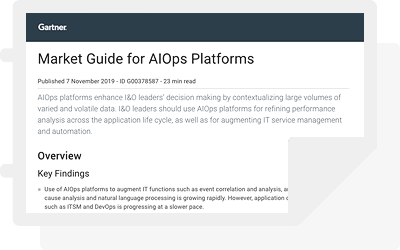We’ve all heard of IaaS and SaaS before. These terms have become ubiquitous for infrastructure-as-a-service and software-as-a-service. Another variant is PaaS, short for platform-as-a-Service.
Today, most companies are using at least one type of “as a service” offering as a way to focus on their core business and spend less money on an important service.
Now the same methods that made other “as a service” offerings so popular are being applied to a new field: artificial intelligence. AIaaS is short for AI-as-a-service. The term and the product are on the rise, and we’re digging into what AIaaS means in this article.
Understanding AI
We hear it repeated over and over: artificial intelligence is a way to get machines to do the same kind of work that human brains can accomplish. This definition is the subject of significant debate, with technology experts arguing that comparing machines to human brains is the wrong paradigm to use. It may promote fear that humans can be taken over by machines. The term AI can also be used as a marketing tactic for companies to show how innovative they are.
Instead, perhaps, artificial intelligence should be understood as a broad term under which a range of technologies can be used to accomplish tasks based on understanding the probability of an answer based on a range of data. For instance, machine learning, which is the leading type of AI right now, is a way to get computers to learn something without a developer explicitly programming for the task.
The majority of AI makes use of algorithms. Algorithms are defined as a set of rules or a process that is followed, typically by a computer, to calculate or solve a problem. AI algorithms in particular focus on computers solving specific tasks by studying large amounts of data and make generalizations or statistic estimations. AI algorithms are often broken into two types:
- Classic machine learning algorithms, which includes classification and regression
- Deep learning algorithms, which are more modern algorithms that employ deep neural nets
When these algorithms are applied in certain ways, computers can seem to act like a human brain: determining objects in a picture, carrying on a spontaneous conversation with a human being, responding to road blocks from a driverless car.
Companies want to take advantage of all the insight that can be gleaned from data: better understanding their customers, why some choose to buy and some don’t, what points of production and delivery can be automated, etc. Any seemingly intangible information can turn out to be the competitive edge.
But, for a long time, artificial intelligence was cost-prohibitive to most companies: the machines were massive and expensive, the programmers who worked on such machine were in short supply and cost big bucks, and companies didn’t even have data to study.
As cloud service has become incredibly accessible, AI is more accessible: companies can gather and store infinite data. This is where AI-as-a-service comes in.
AI is big business
If your company isn’t employing artificial intelligence yet, you will be soon. International Data Corporation estimates that worldwide spending on AI will increase more than fourfold in the next four years: from $12 billion spent in 2017 to over $57 billion in 2021. As an indicator, worldwide AI spending from 2016 to 2017 increased by over 59 percent.
Another research group, RightScale, indicate in their annual State of the Cloud report that most companies who use or want to implement cloud services want to do so for a single, resounding reason: machine learning. Companies want a way to incorporate AI into apps, products, services, and big data analytics and one of the easiest ways is AIaaS.
AI as a service
The concept of “everything as a service” refers to any software that can be called upon across a network because it uses cloud computing. In most cases, the software is available off the shelf, meaning that you can buy it from a third-party vendor, make a few tweaks, and begin using it nearly immediately, even if it hasn’t been totally customized to your system.
For companies that can’t or are unwilling to build their own clouds and build, test, and utilize their own artificial intelligence systems, AI-as-a-service is the solution. Like other “as a service” options, the same approach is applied to artificial intelligence:
- Allowing the company to focus on their core business, not becoming data and machine learning experts
- Keeping costs transparent
- Significantly lowering risk of investment
- Increasing the benefits from data
- Increasing strategic flexibility, because AI-as-a-service is flexible and dynamic
Types of AIaaS
If we understand AIaaS as artificial intelligence off the shelf, what are we getting when we purchase a service?
Well-known types of AIaaS include:
- Bots and digital assistance. These can include, for example, chat bots that use natural language processing (NLP) algorithms to learn from conversation with human beings and imitate the language patterns while providing answers. This frees up customer service employees to focus on more complicated tasks. These are the most widely used type of AIaaS right now.
- Cognitive computing APIs. Short for application programming interface, APIs are a way for developers to add a specific technology or service into the application they are building without writing the code from scratch. Common options for APIs include NLP, computer speech and computer vision, translation, knowledge mapping, search, and emotion detection.
- Machine learning frameworks. These are tools that developers can use to build their own model that learns over time from existing company data. Machine learning is often associated with big data but can have other uses – and these frameworks provide a way to build in machine learning tasks without needing the big data environment.
- Fully-managed machine learning services. If machine learning frameworks are the first step towards machine learning, this option is a way to add in richer machine learning capabilities using templates, pre-built models, and drag-and-drop tools to assist developers in building a more customized machine learning framework.
Vendors of AIaaS
The four major vendors of AIaaS are well-known, including Amazon Web Services (AWS), Microsoft Azure, Google Cloud, and IBM Cloud. Each vendor offers different types of bots, APIs, and machine learning frameworks, and all except IBM are currently offering fully-managed machine learning options, too.
Other well-known technology firms are starting to get into the competition, including Oracle, BMC, and SalesForce.
There are countless start-ups who are focusing on various parts of AIaaS, as well. As in all industries, it’s not uncommon for the larger companies to purchase the smaller companies in order to add the developed services to their portfolios.
The benefits and drawbacks and AIaaS
Like other “as a service” offerings, AIaaS offers many of the same benefits, including:
- Advanced infrastructure at a fraction of the cost. Successful AI and machine learning often requires many parallel machines and GPUs that must be speedy. Prior to AIaaS, a company may decide the initial investment and ongoing upkeep of physical and digital equipment too much. Now, AIaaS means companies can harness the power of machine learning at significantly lower costs. This means you can continue working on your core business, not training and spending on areas that partially support decision-making.
- Transparency. Hand in hand with lower costs, there’s a lot of transparency within AIaaS: pay for what you use. Though machine learning requires a lot of power hewn it’s running, you may only need that power in short amounts of time – you don’t have to be running AI non-stop.
- Usability. While many AI options are currently open-source, they aren’t always user-friendly. This means your developers are spending time installing and developing the machine learning technology. AIaaS instead is ready out of the box – so developers can harness the power of AI without becoming experts first.
- Scalability. AIaaS allows you to start with smaller projects to learn if it’s the right fit for certain projects. As you gain experience with your own data, you can tweak your service and scale up or down as project demands change.
Drawbacks are similar to other “as a service” offerings, as well, including:
- Reduced security. AI and machine learning depend on significant amounts of data, which means your company must share that data with third-party vendors. Data storage and access and data transit to servers must be secured to ensure the data isn’t improperly accessed, shared, or tampered with.
- Reliance. Because you’re working with one or more third-parties, you’re relying on them to provide the information you need. This isn’t inherently a problem, but it can lead to lag time or other issues if any problems arise – on their side or yours.
- Reduced transparency. In AIaaS, you’re buying the service, but not the access. Some consider “as a service” offerings a black box – you know the input and the output, but you don’t understand the inner-workings, like which algorithms are being used, whether the algorithms are updated, and which versions apply to which data. This may lead to confusion or miscommunication regarding the stability of your data or the output.
- Data governance. Particular industries, such as medical fields, and particular countries may limit whether or how data be stored in a cloud, which altogether may prohibit your company from taking advantage of certain types of AIaaS.
- Long-term costs. Costs can quickly spiral with “as a service” offerings, and AIaaS is no exception. As you wade deeper into AI and machine learning, you may be seeking out more complex offerings, which can cost more and require that you hire and train staff with more specific experience. As with anything, though, the costs may be a wise investment for your company.
As a rapidly emerging field, AI-as-a-service has plenty of benefits that bring early-adapters to the table as well as plenty of drawbacks that mean room for improvement. While there may be bumps in the road while developed AIaaS, it’s likely to be as important, if not more so, than previous “as a service” offerings.







